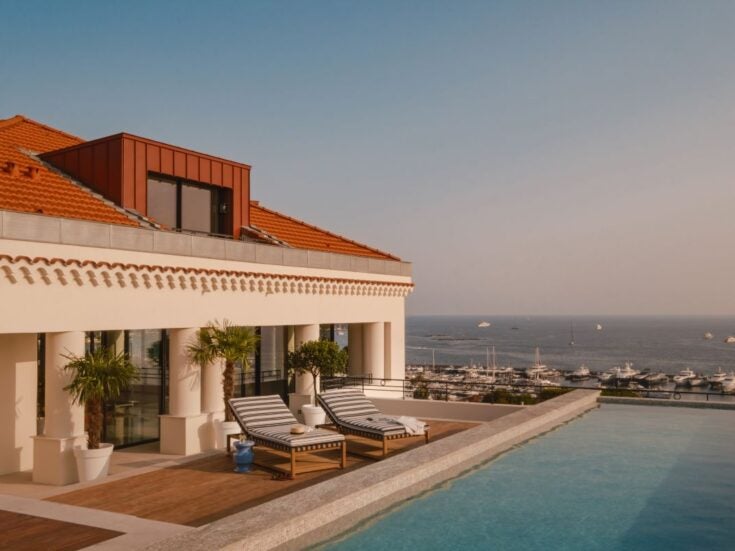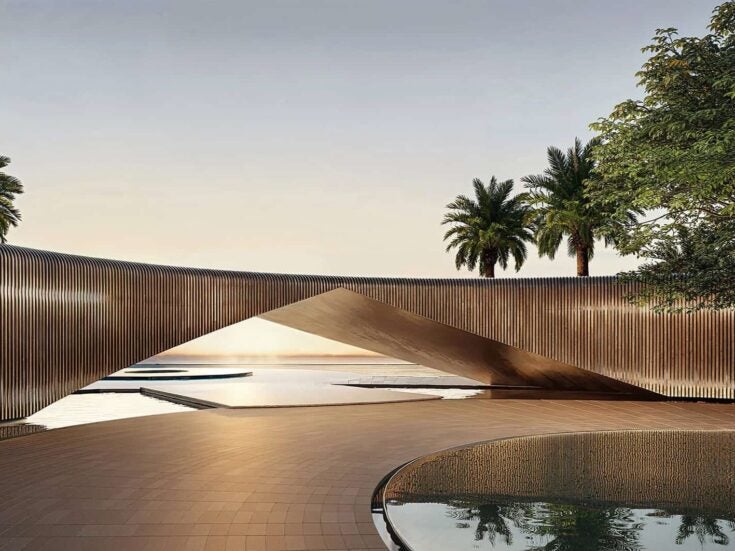
Don’t let the big-city real-estate meltdown put you off: investing in beachfront property or farmland is still a good bet, says Vanessa Neumann.
What would you like: farm or beach? No, this isn’t our first date after meeting on an online dating site, but rather how you should choose your next real-estate investment — especially since keeping your money in a bank isn’t looking that appealing any more.
Pundits predict that farmland returns will take a quantum leap over the next eighteen months. Arguably, this is no news flash, as farmland already has a proven track record: it has been a great investment for 34 out of the past 37 years, and has outpaced the S&P 500 for each of the past fifteen years. However, it is now set to go stratospheric, with some predictions it will rise 12 per cent a year through 2017.
Already, it costs 47 per cent more than it did a year ago; it rose 24 per cent just in the first half of 2008 alone, and now averages £12,965 on average per hectare. Most of the average price rise is due to the sharp increase in the value of arable land, which gained 32 per cent in the first half of 2008 to £14,453 per hectare. Pastureland rose less steeply over the same period, by 16 per cent to £11,477.
It used to be lifestyle purchasers, City boys looking for their rural retreat, who pushed up rural prices, but their influence is now on the wane. As city slickers rethink their lifestyle priorities, purchases by non-farmers have dropped by 10 per cent in the first half of 2008 and now account for just 27 per cent of all land changing hands, leaving farmers to be the dominant market force.
The main cause for the steep rise in land prices is skyrocketing commodity prices, particularly corn, due to the global demand for ethanol. Further pressure is added by shrinking supply: deteriorating soil quality means that, year-on-year, 5–8 million of the world’s 1.5 billion acres turn barren, according to the Worldwatch Institute in Washington DC. Global warming will also hinder crops, further shrinking supply, raising food prices and thus making farmland a highly profitable investment for at least a decade.
Farmland is certainly a better investment now than urban real estate in any of the main cities. Last year, from Iowa to Argentina, farmland price rises outpaced those of London and New York for the first time in 30 years. The price of a Manhattan loft only rose by 12 per cent, while a pied-à-terre in London gained 11 per cent. Now, of course, those gains have been wiped out and will continue to fall precipitously in the continuing financial meltdown.
But if wellies are not for you, then you’ll be heartened to hear that beachfront property is also an excellent investment — and there are more interesting possibilities emerging here every year, to suit every taste.
From Anguilla to Phuket, beach properties are being snapped up at bumper prices. In Anguilla, 2005 was a banner year, as major Hollywood stars flocked there and made it chic. Now the vast majority of houses on the market there are worth seven figures. Other small British Caribbean colonies have also performed exceedingly well as investments, some by learning from the mistakes of others. In contrast to the overdeveloped US Virgin Islands, particularly St Thomas, the British Virgin Islands will not allow any building ‘taller than a palm tree’ and discourage cruise ships.
As a result of savvy planning, villas on Virgin Gorda sell for $3 million and up. Virgin Gorda’s premier resort is Rosewood Little Dix Bay, opened in 1964 by Laurence Roosevelt, with 98 rooms on the beach. Two years ago, Little Dix Bay started to build more villas on the surrounding land, which are now available for $2.8 million and up. Other notable resorts on other islands include the ecological paradise Guana Island, Pearl Island Resort and Sir Richard Branson’s private island resort, Necker Island. Given the boom, the preoccupation of the government is not to price the locals out of the market.
Yet one of the success stories of the Caribbean is Turks and Caicos, where a two-acre beachfront on Long Bay that in 2001 would have sold for $150,000 sold in 2007 for $1.5 million. Of course, celebrities such as Keith Richards, Christie Brinkley, Donna Karan, Bruce Willis and Ben Affleck flocking to Parrot Cay has helped — as has the increase in flights from Miami, Atlanta, Charleston, New York, Philadelphia, Boston, Canada and London.
Turks and Caicos is also the site of one of the great private-island developments in the world today: Dellis Cay. Dellis Cay is the entirely private island bought and developed by the O Property Collection (founded by Turkish entrepreneurs Dr Cem Kinay and Oguz Serim) that features serviced residences by the Mandarin Oriental, as well as fantastically beautiful villa creations by Zaha Hadid, Piero Lissoni, Shigeru Ban and other cutting-edge architects. While most of the project is still under construction, the Shigeru Ban section is now open for business; Michael Douglas and Catherine Zeta-Jones have been early purchasers.
From their strictly seven-figure portfolio, purchasers will be able to choose from a range of styles and a menu of customisable options, from exteriors to interiors. The overall look will be sleek and the feel exclusive. There is no doubt that purchasing now will prove a tremendous return on investment, as the top end of the market clamours for privacy and style, both of which Dellis Cay provides in spades for its homeowners.
Turks and Caicos is also the site of another private island development: Sporting Club at Ambergris Cay. This 1,100-acre island features a 450-acre nature reserve and is simultaneously an adventurer’s paradise, with a broad offering of sporting activities. Undeveloped homesites range from $700,000 to $5.5 million, while homes start at about $3 million. It is easily accessible by both sea and air. By air you can land your jet on its 5,700ft paved jet strip with customs and immigration, or hire the Sporting Club jet. Otherwise, moor your yacht at the Hawkes Nest Harbour Marina and Village.
At the other end of the world and the spectrum, in Thailand, you have the Six Senses resort, Soneva Kiri. There are only ten residences available in this exclusive and spectacularly remote-feeling resort. While Dellis Cay is an exercise in cutting-edge modernism, Soneva Kiri has a more rustic feel. The magnificent beach and hilltop villas offer a range of easy customisation based on templates of between four- and six-bedroom villas, all with private butler, a private airline and a world-class spa provided by Soneva resorts. The resort also functions as a rental agency, ensuring that when you are not there on holiday, the villa earns its keep.
One of the more financially attractive beach home investments has to be Anahita in Mauritius. For a mere $500,000, foreigners can purchase up to 1.5 hectares of freehold property and secure residency in this tax haven. The 213-acre development of former plantation extends along six kilometres of prime coastline and features a golf course designed by Ernie Els. The 70-residence project is now in its third phase, featuring villas with a minimum $2 million price tag; the first phase sold out in six hours.
So whichever you choose, choose wisely and quickly, for both farm and beach may prove the refuge for market-weary investors, driving prices up faster than anticipated.






